The common Japanese term mottainai, meaning "what a waste," has become an international concept. As it is one of my favorite expressions, I was really delighted when the Kenyan Nobel laureate and environmental activist, Wangari Maathai (1940-2011) — whom I never met though she was my heroine — used it when she visited Japan in 2005.
Just recently, too, mottainai has come to the fore in our Afan Trust woods. That's because — as readers of last September's Notebook may recall — we have been facing the fast-growing problem of Rudbeckia laciniata. Sporting pretty bright-yellow flowers, this invasive member of the aster/sunflower/daisy family Asteraceae is known as ōhan-gonsō in Japanese, and by a whole slew of names in English — but mainly as goldenglow, cutleaf or coneflower. I'll be cheerful and refer to it as goldenglow.
When we first spotted this up-to-3-meter-high lover of damp soils here in our corner of the Nagano Prefecture hills, we were pleased because its flowers really lure bees and butterflies. However, the Environment Ministry has deemed it a pest, so as a trust — and on pain of being fined if we don't — we have to do our best to get rid of it.
The plant spreads through its hardy roots as well as by seed-dispersal, so the only effective way to try to control it is by pulling it up shoot by shoot. Then we have to gather all the plant material and incinerate it. Last year we had teams of volunteers doing just that, and this year we are doing the same.
Meanwhile, I had heard that some people in Hokkaido use the young shoots as tempura, and I also learned online that the Cherokee tribe of Native Americans used this plant that's native to eastern North America as a potherb in stews. So this spring I tried goldenglow shoots prepared as hitashi — a quick and easy Japanese way of cooking that's used for all kinds of greens.
First, we took some young shoots and dropped them into boiling water to which a little salt had been added. Then, when the water came back to boil we left the greens in just a little longer than we would spinach before draining them and cooling them with cold running water. Finally, after squeezing out the extra moisture to remove any bitterness, we sliced the bright-green mass to make it easier to eat and added some dried bonito flakes and a little soy sauce — mayonnaise would also be fine.
I was pleasantly surprised at the taste and the texture, and ended up eating a double portion. Prepared this way, goldenglow tastes a little like young edible chrysanthemums, but with a consistency and color more like spinach. It could be used in many ways, and I am pretty sure it is very nutritious.
If we have to pull up goldenglow when the shoots are young, it is mottainai to just burn them. In season, we could feed a few hundred people with those greens from just a few patches in our woods.
Another mottainai thing I've been going on about for years is the huge waste of venison in Japan. With no natural predators (wolves became extinct here a century or so ago) and the number of hunters dwindling and aging, deer populations are flourishing at a huge cost to agriculture and forestry — and to the rare plants they are decimating.
Professional hunters or rangers are needed to cull the deer, and although the Japanese Hunting Association's graying membership does its collective best, it is not enough. According to the latest data I've come across, from 2008, about 250,000 deer are shot each year nationwide — with the carcasses in many cases being either left in the mountains or dragged out to be buried or burnt.
In April I republished my book titled "Venison Umai Shika ga Nihon wo Suku" ("Delicious Venison to Save Japan"), which urges the wise use of all that meat and those hides. From an average-size shika deer, I can make 100 meals. These will feature the liver and heart when fresh and in good condition, various cuts of venison — and a broth from the bones that'll put hairs on your chest (sorry, ladies).
For the last 10 years, I have only rarely bought beef, preferring to stock my freezers with venison and wild-boar meat from another free-roaming beast that's becoming increasingly numerous and causing problems.
Apart from regularly consuming venison, and serving it to special guests, I have made a couple of television documentaries about the subject, twice published that book, and stood behind a hot grill at various public events such as the annual Earth Day Tokyo in April, serving all-comers with venison in the form of stew, keema curry, burgers, sausages and steaks. And every time, we run out of our venison stock early and have to turn a lot of disappointed folk away.
Deer numbers need to be controlled based on well-researched and documented culls. Biologists, environmentalists, farmers, foresters and government officials at all levels agree on this, so it's surely mottainai to throw the meat away. If you were eating a meal of wild venison you wouldn't have to be eating domesticated beef or pork, thus saving a lot of pasture, grain and water.
Thankfully, several prefectural governors, including our Gov. Shuichi Abe here in Nagano, are well aware of this. As a result, the availability of venison in our restaurants and hotels is on the increase. And — if you choose to become a member of the C.W. Nicol Afan Woodland Trust — one day I'll cook it for you.
The third and last mottainai topic I'll discuss this time is the awful waste of our Japanese woodland and forests. Around 67 percent of Japan's land area is wooded, but a large proportion of that comprises overcrowded single-species plantations of conifers such as sugi (Cryptomeria japonica; Japanese cedar) that should have been trimmed as they grew.
Since 1986, we have been nurturing our Afan woodland; thinning, trimming, planting and encouraging trees, flowers and wildlife. Then, just last year, we were able to enter an agreement with the Forestry Agency to manage the larch and cedar plantations adjoining our trust woodlands. In autumn, we started selectively felling, and this spring we finished extracting the trimmed-out logs in the first section we worked on. To lessen damage to the ground, we used horses — not heavy machinery — to drag them out.
Our trust, together with university experts, did the primary research; we contracted the horse-loggers and we ourselves will purchase the extracted timber. The cedars left behind in this first section now have space to grow; the understory will flourish and turn from brown to green; and wildlife biodiversity will improve along with the quality and value of the remaining trees. And with us monitoring and documenting what happens, isn't that a win-win situation for the government?
Of course we now have a lot of cedar logs — and a host of cynics insisting that the timber can't be used. Well, over a couple of beers I talked to some friends in the furniture-making industry — and in no time we agreed to produce a range of specially designed, quality pieces. We'll create a brand name for these horse-logged timber products and do our bit to advertise them.
Meanwhile, the spindly ends, thick branches and damaged logs will be turned into wood chips to be spread on woodland paths, including the new ones created by the horses when they pulled out the logs. Horses are very good at knowing where's best to step when they are dragging out long, heavy loads, and together with their human handlers they choose the safest routes on the slopes — ergo, the best routes for footpaths. These paths are less than a meter in width, and with a little trimming and some spreading of a layer of wood chips we can protect the forest floor and have a pleasant place for people (and bears) to walk.
I know I go on about this, but waste is surely one of the biggest environmental and social problems facing humanity. I have heard all the excuses why Japanese timber and venison and so many other things are too costly to work with, and as far as I am concerned, the continual whine of hand-me-down excuses is another case of mottainai for both my ears and my time.
The reality is that, if we put our heads together, we come up with some simple and ingenious solutions — many of which are a lot of fun to try out. Me, I'm going to try adding some goldenglow to a venison stew, and I wouldn't be at all surprised if it isn't a traditional Cherokee dish.



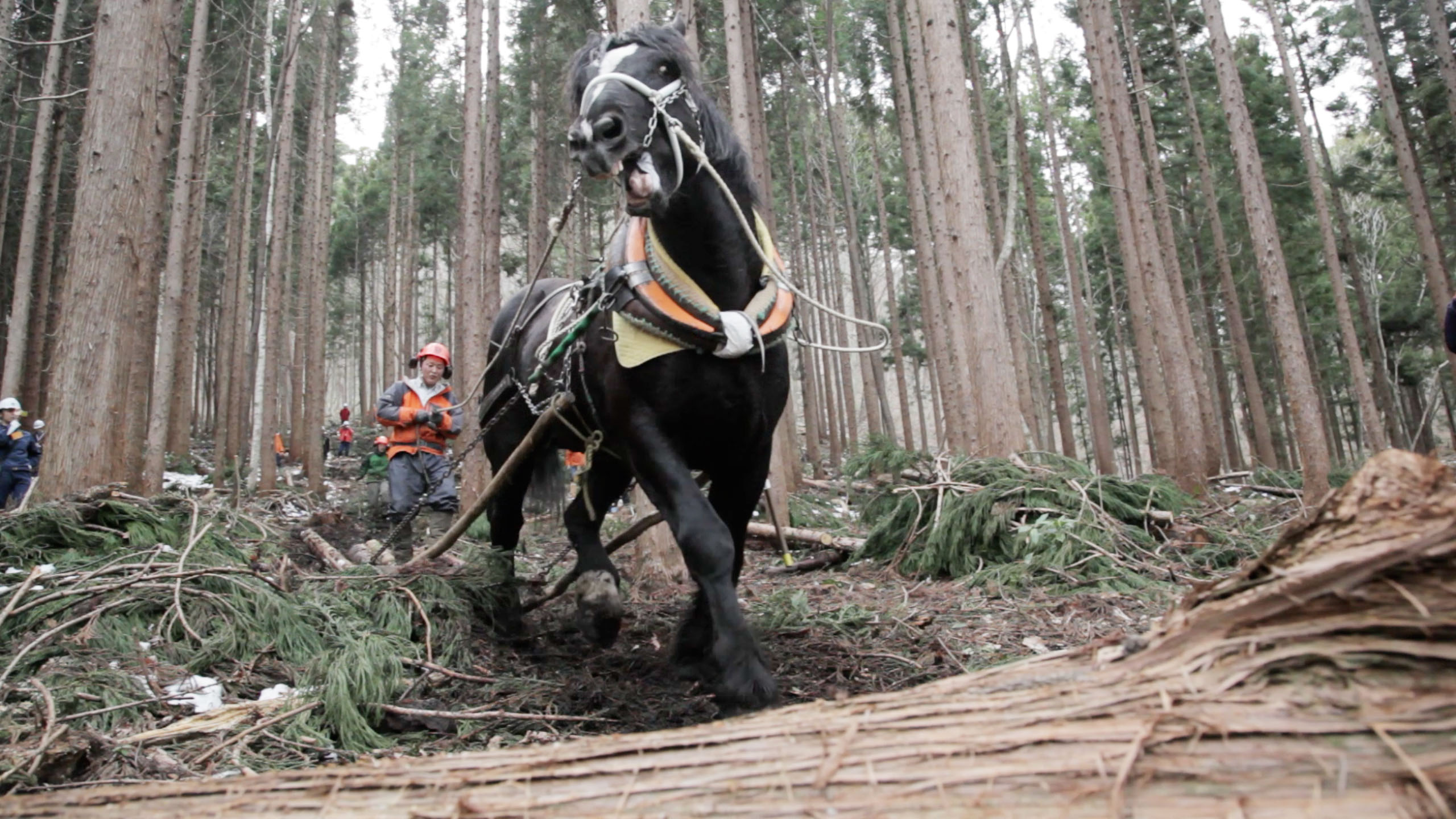
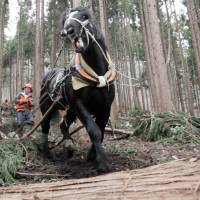
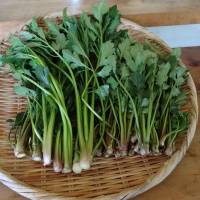
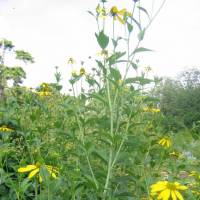
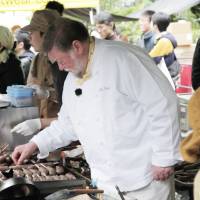
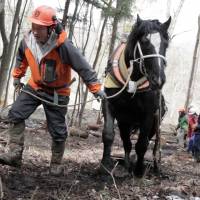














With your current subscription plan you can comment on stories. However, before writing your first comment, please create a display name in the Profile section of your subscriber account page.